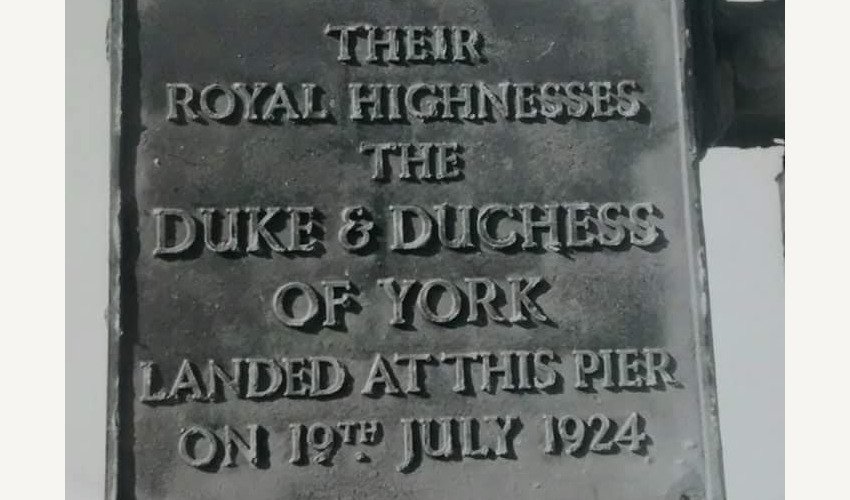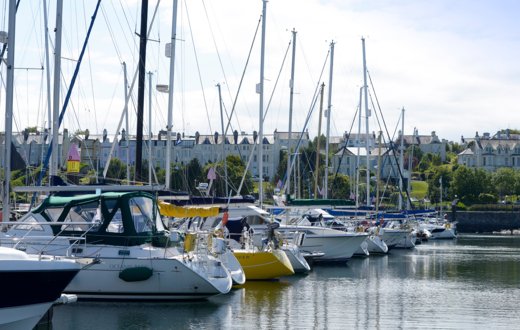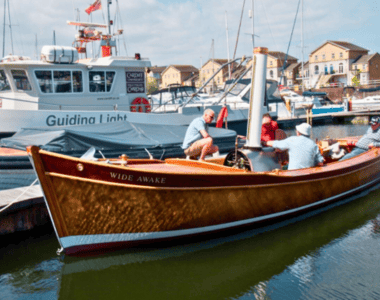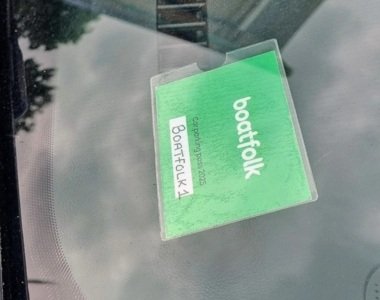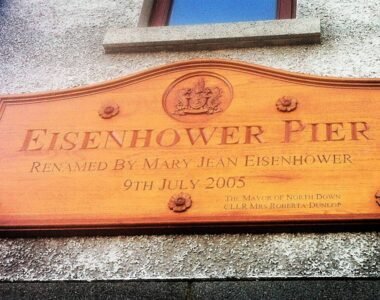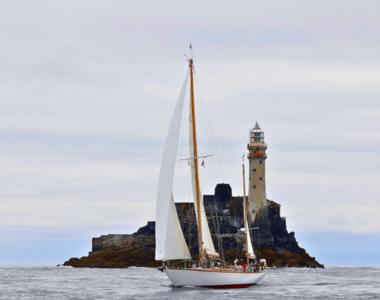Back in the day, two handsome bronze plaques stood proudly on what we now call Eisenhower Pier, quietly reminding passers-by of Bangor’s brush with royalty. One marked a royal departure in 1903, the other a royal arrival in 1924—and together they told a story of Bangor’s place in the royal spotlight.
The first plaque read: “His Majesty King Edward VII and Queen Alexandra embarked from this pier on July the 27th, 1903.” They were heading off as part of a royal tour of Ireland, with Bangor chosen as one of the key stops. Crowds gathered along the shore, waving flags and craning their necks for a glimpse of the King and Queen as they stepped aboard the royal yacht.
Fast forward 21 years to July 1924, same pier, different monarch. The second plaque commemorated the arrival of “Their Royal Highnesses The Duke & Duchess of York landed at this pier on 19th July 1924.” The Duke (who’d later become King George VI) and his wife, Elizabeth Bowes-Lyon, yes, the future Queen Mother, made quite the entrance. It was a big day for Bangor, and the buzz reached well beyond County Down.
And then—poof.
During redevelopment works in the 1980s, the North Pier was being given a serious makeover (this was before it was renamed in honour of General Eisenhower). The plaques were removed for safekeeping... just not by us. And despite best efforts over the years, they’ve never been seen again. No dramatic heist, no newspaper clippings, just quietly vanished into the mists of time.
It’s a real shame. Those plaques weren’t just bits of bronze—they were small, solid links to some remarkable moments in Bangor’s past.
Still, while the plaques may be gone, the memories live on in old photographs, archives, and the occasional history buff who’ll nod knowingly and say, “Did you know the King once stood right here?” No one alive today saw it happen, of course—but that doesn’t stop the story from being passed down, with all the fondness and colour that Bangor’s royal moments deserve.
And funnily enough, here we are again, in the month of July, many years later, telling their story once more.
